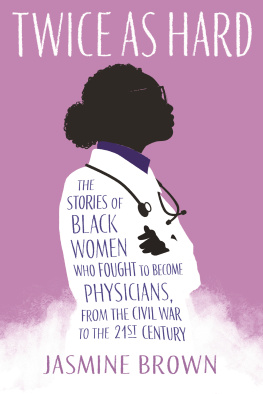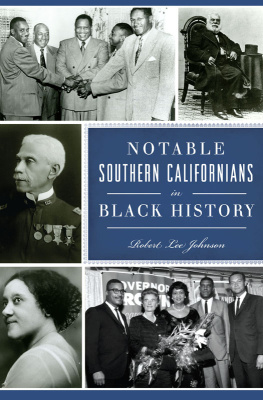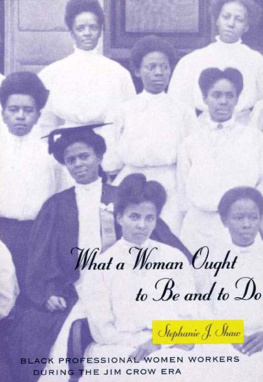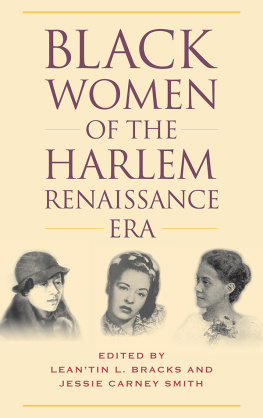Liz Sonnenborn - Black Women in American History
Here you can read online Liz Sonnenborn - Black Women in American History full text of the book (entire story) in english for free. Download pdf and epub, get meaning, cover and reviews about this ebook. year: 2021, publisher: Infobase Publishing, genre: Non-fiction. Description of the work, (preface) as well as reviews are available. Best literature library LitArk.com created for fans of good reading and offers a wide selection of genres:
Romance novel
Science fiction
Adventure
Detective
Science
History
Home and family
Prose
Art
Politics
Computer
Non-fiction
Religion
Business
Children
Humor
Choose a favorite category and find really read worthwhile books. Enjoy immersion in the world of imagination, feel the emotions of the characters or learn something new for yourself, make an fascinating discovery.
- Book:Black Women in American History
- Author:
- Publisher:Infobase Publishing
- Genre:
- Year:2021
- Rating:3 / 5
- Favourites:Add to favourites
- Your mark:
- 60
- 1
- 2
- 3
- 4
- 5
Black Women in American History: summary, description and annotation
We offer to read an annotation, description, summary or preface (depends on what the author of the book "Black Women in American History" wrote himself). If you haven't found the necessary information about the book — write in the comments, we will try to find it.
Black Women in American History chronicles the lives of black women from indentured servitude in the early American colonies to the cruelty of antebellum plantations, from the reign of lynch law in the Jim Crow South to the triumphs of th
Black Women in American History — read online for free the complete book (whole text) full work
Below is the text of the book, divided by pages. System saving the place of the last page read, allows you to conveniently read the book "Black Women in American History" online for free, without having to search again every time where you left off. Put a bookmark, and you can go to the page where you finished reading at any time.
Font size:
Interval:
Bookmark:

Copyright 2021 by Infobase
All rights reserved. No part of this publication may be reproduced or utilized in any form or by any means, electronic or mechanical, including photocopying, recording, or by any information storage or retrieval systems, without permission in writing from the publisher. For more information, contact:
Chelsea House
An imprint of Infobase
132 West 31st Street
New York NY 10001
ISBN 978-1-4381-9860-6
You can find Chelsea House on the World Wide Web
at http://www.infobase.com
On the morning of June 27, 2015, Bree Newsome, a thirty-year-old Black activist stood outside the South Carolina State House, waiting for a signal. Finally, one of her associates made a gesture. Newsome then knew the police officers outside the building were distracted, and the coast was clear. She walked up to a high metal fence surrounding a flagpole. As planned, James Ian Tyson was waiting for her there. With Tysons help, Newsome managed to scale the fence. She then started her climb up the thirty foot pole, atop which flapped a large Confederate flag.
The police officers saw what was happening and rushed to the bottom of the pole. Newsome ignored them, concentrating only on the task at hand. When she reached the top, she quickly unhooked the flag. The police ordered her to come down. She responded, in a clear, loud voice, You come against me with hatred and oppression and violence. I come against you in the name of God. This flag comes down today! Newsome maneuvered her way back down the pole. When she reached the ground, the other activists who had helped her plan the protest and had watched silently as it happened burst into cheers and applause. The police promptly arrested Newsome and Tyson and charged them with defacing monuments on capitol grounds.
Ten days before, Newsome had been in deep shock and mourning, after hearing of the massacre at the Emanuel African Episcopal Church in Charleston, South Carolina. A young white supremacist named Dylann Roof had entered the historically Black church during a Bible study. He pulled out a gun and killed eight members of the churchs congregants and its senior pastor, Clementa Pinckney. That night, Newsome could not stop thinking about what had happened. As she later recalled, I couldnt sleep. I sat awake in the dead of night. All the ghosts of the past seemed to be rising.
Pinckney was a state senator. By law, the United States flag and state flag at the South Carolina State House were lowered to half-mast to honor him. However, a third flagthe flag of the Confederacystill flew high above the other two. That flag had first been hoisted above the building in 1961. It was meant to send a message to the states Black population. As African Americans were demanding equality and justice during the Civil Rights Movement, lawmakers used the flag to show the public their absolute commitment to white supremacy.
As Newsome later explained, African Americans had long despised the Confederate flag outside the state house. But after the murders at the Emanuel Church, there was a renewed sense of outrage over the states continued endorsement of this hate symbol. Newsome decided it was time to do something about it. She met with a small group of Black and White activists who called themselves The Tribe. As they planned the protest, Newsome volunteered to climb the pole, even though she had no climbing experience. Another activist spent a day and a half showing her what to do as she practiced climbing basketball hoops and lampposts. Newsome got so winded she was not sure she could handle the thirty-foot-high flagpost. But on the day of the protest, her adrenaline pulled her through. I was just on a different level of focus at that point, but I was also just at a certain place of peace, she later said.
Images of Newsome taking down the flag were widely shared on social media and broadcast on the national news. Civil rights leaders spoke out in support of her actions, and celebrities rushed in with offers to pay her bail. (The charges against Newsome and Tyson were later dropped.) Inspired by Newsome, activists everywhere in the United States denounced Confederate flags, statues, and memorials in their communities and demanded that they, too, be taken down. Even the legislature of South Carolina could no longer ignore the outrage of so many Black citizens. Less than three weeks after Newsomes climb, state lawmakers voted to remove the Confederate flag from the state house permanently.
In the media attention she received, Newsome was repeatedly referred to as the new Rosa Parks. Parks is heralded for refusing to give her bus seat to a white passenger in 1955, thus sparking the Montgomery bus boycott, one of the pivotal events of the Black civil rights struggle of the twentieth century. The comparison was certainly meant to honor Newsome. But the fact that she was compared to only Rosa Parks indicates how little the public is aware of the many bold and defiant Black women who have made their mark on American history. Newsome could have been the new Maria Stewart, who, in the 1830s, dared to give public lectures against slavery when women were banned from the lectern. She could have been the new Fannie B. Peck, who established the Housewives Leagues to pressure White employers into hiring Black workers during the Great Depression. Or she could have been the new Tarana Burke, who founded the Me Too movement in 2006 as a forum for all women to speak out about sexual harassment.
In recent decades, scholars have finally begun to celebrate the hidden history of these largely unknown, but nevertheless towering figures. At the same time, they have also started searching for clues about the lives of everyday Black women, who previously had all but been ignored by historians. Although the scholarship is still evolving, portraits of how these women lived, loved, suffered, and survived have finally begun to emerge. Much of the history of Black women in United States is tragic and painful, as they experienced the horrors of slavery and the cruelty of Jim Crow. But their stories are also tales of courage, cunning, strength, and above all hope for a better day. It is just that hope that kept Rosa Parks in her seat and lifted Bree Newsome toward the sky.
Entry Author: Sonneborn, Liz.
Isabel de Olvera stood before the mayor of Quertaro, a town in New Spain (now Mexico) on January 8, 1600. She presented him with affidavits she wanted him to sign in front of three witnesses who had accompanied hera free Black man, an enslaved Black man, and a mixed-race woman.
Olvera eloquently made her case to the mayor. She was about to leave New Spain and travel more than one thousand miles north on an expedition headed by Juan Guerra de Resa. Its destination was present-day Santa Fe, New Mexico, because Spain hoped to bolster its claim to the surrounding region. The expedition included both men and women, one of whom Olvera worked for as a servant.
All faced great dangers on their journey. They could be felled by disease, starvation, or attacks by natives of the region. But Olvera came to the mayor to protect herself from a risk unique to her. She was the daughter of an Indian woman named Magdelena and a Black man named Hernando. At the time, Spanish law generally held that children inherited their mothers status. As Olvera explained, during her travels, [I] have reason to fear that I may be annoyed by some individual since I am a mulatto [mixed-race person]. Asserting that she was free and not bound by marriage or slavery, she wanted legal protection of her status. Her statement ended with, I request that a properly certified and signed copy be given to me in order to protect my rights, and that it carry full legal authority. I demand justice.
Font size:
Interval:
Bookmark:
Similar books «Black Women in American History»
Look at similar books to Black Women in American History. We have selected literature similar in name and meaning in the hope of providing readers with more options to find new, interesting, not yet read works.
Discussion, reviews of the book Black Women in American History and just readers' own opinions. Leave your comments, write what you think about the work, its meaning or the main characters. Specify what exactly you liked and what you didn't like, and why you think so.








